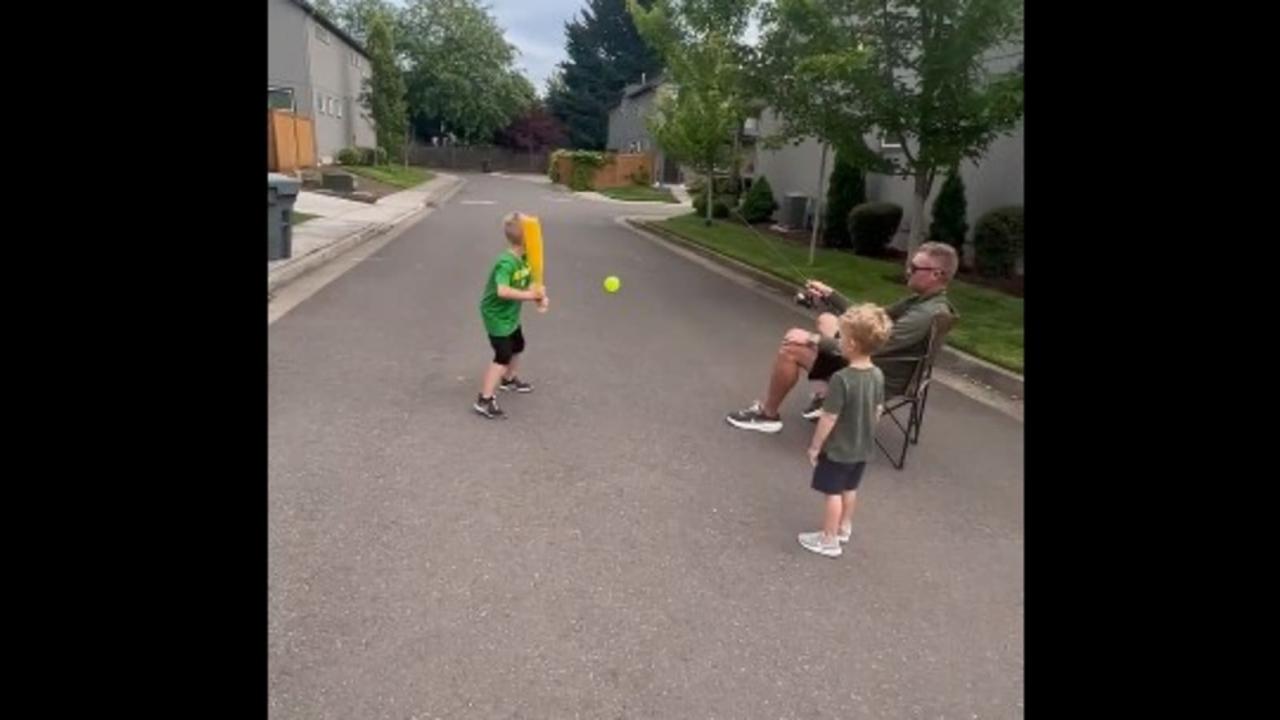Boy hit by drone—it’s a headline that shocks us into considering the unexpected dangers of rapidly advancing technology. This isn’t just about reckless drone operators; it’s about understanding the potential for accidents, the gaps in safety regulations, and the need for proactive solutions. We’ll explore various scenarios, from a small recreational drone causing a minor injury to a larger, heavier model leading to severe consequences.
This investigation delves into the legal, ethical, and technological aspects of this growing concern.
We’ll examine existing drone regulations across different countries, highlighting their strengths and weaknesses. We’ll also look at ways to improve public awareness and propose technological advancements, like enhanced safety features and geofencing, to prevent future incidents. Finally, we’ll analyze a fictional case study to illustrate the potential impact of such an accident, from physical injuries to long-term psychological effects.
A Boy Hit by a Drone: Understanding the Risks and Implementing Solutions

The increasing popularity of drones presents both exciting opportunities and significant safety challenges. One concerning aspect is the potential for accidents involving drones and people, particularly children. This article explores the various facets of a scenario where a boy is struck by a drone, examining the incident itself, relevant safety regulations, legal and ethical implications, technological solutions, and a fictional case study to illustrate the potential consequences.
The Incident: Describing the Event
Several scenarios could lead to a boy being hit by a drone. These range from simple malfunction to operator error and even malicious intent.
- Scenario 1: Mechanical Failure: A drone experiences a sudden mechanical failure, such as a rotor malfunction or a loss of control signal, causing it to fall unexpectedly and strike a boy.
- Scenario 2: Operator Error: An inexperienced or careless drone operator loses control of their aircraft, resulting in an unintended collision with a boy.
- Scenario 3: Reckless Operation: A drone is flown recklessly near people, disregarding safety guidelines and leading to an accident involving a boy.
Drones involved in such incidents can vary greatly in size, weight, and propulsion systems. Small, lightweight consumer drones weighing under 250 grams might cause minor injuries, while larger, heavier commercial drones, weighing several kilograms, could inflict severe trauma.
Injuries sustained by a boy could range from minor abrasions and bruises to serious head injuries, fractures, and internal bleeding, depending on the size and speed of the drone, and the location of the impact.
| Drone Type | Impact Speed (mph) | Injury Type | Severity | Potential Long-Term Effects |
|---|---|---|---|---|
| Small Consumer Drone (<250g) | 10 | Bruises, abrasions | Minor | None |
| Medium-Sized Drone (1-2kg) | 20 | Concussion, fractures | Moderate | Headaches, cognitive impairment |
| Large Commercial Drone (>5kg) | 30 | Severe head trauma, internal bleeding, fractures | Severe | Permanent disability, death |
Safety Regulations and Drone Operation
Numerous regulations govern drone operation, particularly in populated areas. However, loopholes exist, and continuous improvement is necessary.
Regulations vary significantly across countries. For example, the FAA in the United States has strict guidelines, while regulations in Europe (e.g., under EASA) and Canada (Transport Canada) differ in their specifics, focusing on licensing, registration, and operational limitations.
A public awareness campaign could effectively address safe drone operation. This campaign could utilize various materials such as informative posters displayed in public parks and schools, short videos demonstrating safe practices, and educational resources available online and through community outreach programs. The campaign should emphasize maintaining safe distances from people, especially children, and always being aware of the surroundings.
Best practices for responsible drone operation include obtaining proper licensing and registration, adhering to all local regulations, checking weather conditions before flight, visually inspecting the drone before each flight, avoiding flying over crowds or near sensitive areas like schools and hospitals, and always keeping the drone within visual line of sight.
Legal and Ethical Implications

Drone operators bear significant legal liability in accidents. Determining fault involves investigating the circumstances of the incident, including the operator’s actions, the drone’s condition, and any contributing factors. Negligence or reckless operation could lead to civil lawsuits and criminal charges.
Ethical considerations center on public safety and responsible technology use. The potential for harm necessitates careful consideration of operational practices and adherence to safety guidelines.
Insurance plays a crucial role in covering damages from drone accidents. Comprehensive liability insurance is recommended for all drone operators to mitigate potential financial burdens.
In a hypothetical court case, the plaintiff (the injured boy or his family) would argue negligence on the part of the drone operator, while the defendant (the operator) might claim mechanical failure or unforeseen circumstances. Evidence such as witness testimonies, drone flight logs, and expert opinions would be presented.
A boy being hit by a drone is a serious safety concern, highlighting the potential dangers of these increasingly common devices. This incident makes you think about larger-scale accidents, like the one described in this article about a drone show crash , which underscores the importance of proper regulations and safety protocols. Ultimately, preventing incidents, both small like a child being hit and large like a spectacular show malfunction, requires careful planning and responsible operation.
Technological Solutions and Preventative Measures

Technological advancements can significantly enhance drone safety. Several features can help prevent collisions.
- Obstacle Avoidance Systems: Advanced sensors and algorithms can detect obstacles and automatically adjust the drone’s flight path to avoid collisions.
- Enhanced GPS and Navigation: Precise GPS and advanced navigation systems can improve flight stability and control, reducing the risk of unexpected maneuvers.
- Fail-Safe Mechanisms: Systems that automatically land the drone in case of signal loss or malfunction can mitigate the risk of uncontrolled descent.
Geofencing technology, which restricts drone flight within designated boundaries, can be implemented to prevent drones from entering sensitive areas such as playgrounds or schools. This technology relies on GPS coordinates to define a virtual boundary that the drone cannot cross.
Preventative measures individuals can take include:
- Staying aware of drone activity in their surroundings.
- Educating children about drone safety.
- Reporting unsafe drone operation to authorities.
- Maintaining a safe distance from drones in operation.
Illustrative Example: A Case Study, Boy hit by drone
In a fictional case, a ten-year-old boy, playing in a park, was struck by a DJI Mavic 2 Pro drone. The drone, operated by a nearby photographer, experienced a sudden loss of signal due to interference. The drone, weighing approximately 900 grams, fell from approximately 50 feet, striking the boy on the head.
A boy being hit by a drone is a serious incident, highlighting the potential dangers of these increasingly common devices. It makes you wonder about the safety regulations, especially considering recent events like the drone crash in Paris , which underscores the need for stricter controls. The boy’s injury reinforces the importance of responsible drone operation and better safety measures to prevent similar accidents in the future.
The DJI Mavic 2 Pro, a popular consumer drone with a 20MP camera and obstacle avoidance sensors (which failed in this scenario), was equipped with a 4K camera and had a flight time of approximately 30 minutes. The operator was unaware of the interference issue.
The boy sustained a concussion, a fractured skull, and required several weeks of hospitalization. Long-term effects included persistent headaches and some cognitive impairment.
The scene depicted a sunny afternoon in a bustling park. The boy was playing near a tree, approximately 20 feet from the photographer, when the drone fell from the sky, landing directly on his head. The photographer stood in a relatively open area, his attention momentarily diverted to his phone.
Closing Notes
The increasing prevalence of drones necessitates a comprehensive approach to safety. From stricter regulations and public awareness campaigns to technological advancements in drone design and operation, a multi-faceted strategy is crucial to mitigate the risks. Understanding the potential legal and ethical implications, as well as the potential for severe consequences, should encourage responsible drone usage and foster a safer environment for everyone, especially children.
The future of drone technology depends on prioritizing safety and responsible innovation.
Q&A: Boy Hit By Drone
What are the most common types of drones involved in accidents?
Accidents can involve various drones, from small, lightweight quadcopters to larger, heavier models used for commercial purposes. The size and weight directly impact the severity of potential injuries.
What kind of insurance covers drone accidents?
So, a boy got hit by a drone, right? It makes you think about how these things are flying around everywhere. This whole thing reminded me of a news story I saw about a drone crash in Paris ; thankfully, no one was hurt there. But still, it highlights the potential dangers of drones, especially when you consider that incident with the boy.
Liability insurance is crucial for drone operators. Specific coverage depends on the type of drone, its use, and the operator’s location. Consult an insurance professional for adequate coverage.
Are there any resources for reporting drone-related incidents?
Depending on your location, you may report incidents to local law enforcement, aviation authorities, or relevant government agencies. Check your local regulations for specific reporting procedures.
What are some tips for safe drone operation near children?
Always keep a safe distance from people, especially children. Avoid flying over crowds or in areas where children are playing. Be aware of your surroundings and potential hazards.
